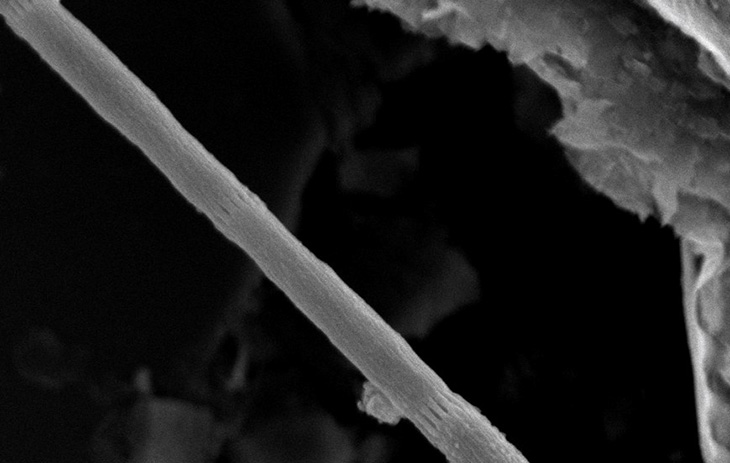

In a discovery that feels as though it belongs more to the realm of science fiction than to modern microbiology, researchers in Oregon have identified a fascinating new species of bacteria with unusual, electrically conductive abilities.
Found within the muddy, intertidal flats of Yaquina Bay, this unique microorganism could potentially revolutionize the future of bioelectronics. This remarkable species belongs to a special group of microorganisms known as “cable bacteria.”
These bacteria are unlike most other life forms because of their capacity to conduct electricity. In essence, they form natural electrical cables within the sediment layers where they dwell. What makes this newly identified species particularly intriguing is its structural composition.
It contains nickel—a heavy metal typically considered toxic to humans—and forms elongated strands of bacterial cells encased in a continuous membrane. This biological configuration enables it to transfer electrons across significant distances within its environment.
The bacteria was identified by Cheng Li, who at the time was a postdoctoral researcher at Oregon State University (OSU), and Clare Reimers, a distinguished professor emerita in OSU’s College of Earth, Ocean, and Atmospheric Sciences. The pair came across the new species while examining sediment samples from the Yaquina Bay estuary, an area rich in ecological diversity and cultural history.
In honor of the region’s Indigenous people, the researchers named the species Ca. Electrothrix yaqonensis. The designation pays tribute to the Yaqona, the Native American community whose ancestral homeland included Yaquina Bay and its surrounding waterways.
The findings were detailed in a study recently reported by OSU Press, bringing to light new insights into the complex and often surprising capabilities of microbial life.
Cable bacteria as a group are already known for their ability to conduct electrical currents through the environments they inhabit. This unusual trait is thought to have evolved as an adaptation to the unique conditions of sedimentary ecosystems, where the availability of electron acceptors like oxygen or nitrate can fluctuate dramatically with depth. By developing the ability to transfer electrons over long distances, these bacteria have optimized their metabolic processes in a way that few other organisms can match.
What sets Ca. Electrothrix yaqonensis apart from other cable bacteria is its distinctive blend of metabolic pathways and genetic characteristics. The new species appears to combine features from both the Ca. Electrothrix genus and another genus of cable bacteria known as Ca. Electronema. This makes it an important evolutionary link that may help scientists better understand how these bacteria developed their remarkable electrical properties.
“This new species seems to be a bridge, an early branch within the Ca. Electrothrix clade, which suggests it could provide new insights into how these bacteria evolved and how they might function in different environments,” said Li.
On a structural level, Ca. Electrothrix yaqonensis possesses surface ridges that are larger than those of any other known cable bacteria. Beneath these ridges lie highly conductive fibers composed of nickel-based molecules—another feature that distinguishes it from its relatives.
While nickel is generally categorized alongside other toxic heavy metals such as cadmium, lead, and aluminum in terms of its effects on human health, in this context it serves a crucial biological function. These nickel-rich fibers enable the bacteria to perform long-distance electron transport, effectively linking deeper sediment layers rich in electron donors like sulfide with surface layers containing electron acceptors such as oxygen or nitrate.
As the OSU statement noted, “These bacteria can transfer electrons to clean up pollutants, so they could be used to remove harmful substances from sediments,” according to Li.
The implications of this discovery extend beyond environmental science. The bacterium’s naturally occurring, highly conductive nickel proteins could serve as a blueprint for new forms of bioelectronics.
Bioelectronic devices, which integrate biological components with electronic systems, hold significant promise in fields ranging from environmental monitoring to medical diagnostics and treatment. The unique design of Ca. Electrothrix yaqonensis could inspire innovative solutions in these areas.
“Also, their design of a highly conductive nickel protein can possibly inspire new bioelectronics,” Li added.
Aside from its scientific significance, the naming of Ca. Electrothrix yaqonensis carries cultural weight. The species name recognizes the Yaqona people, who have inhabited the Yaquina Bay region for generations. For the Yaqona, the bay and its river system were not only vital for sustenance but also central to their identity and cultural heritage.
In this way, the discovery of Ca. Electrothrix yaqonensis serves as a reminder of the enduring relationship between people, place, and the natural world. As researchers continue to uncover the secrets of these remarkable organisms, they also pay homage to the human histories embedded in the landscapes where such discoveries are made.
What are your thoughts? Please comment below and share this news!
True Activist / Report a typo







